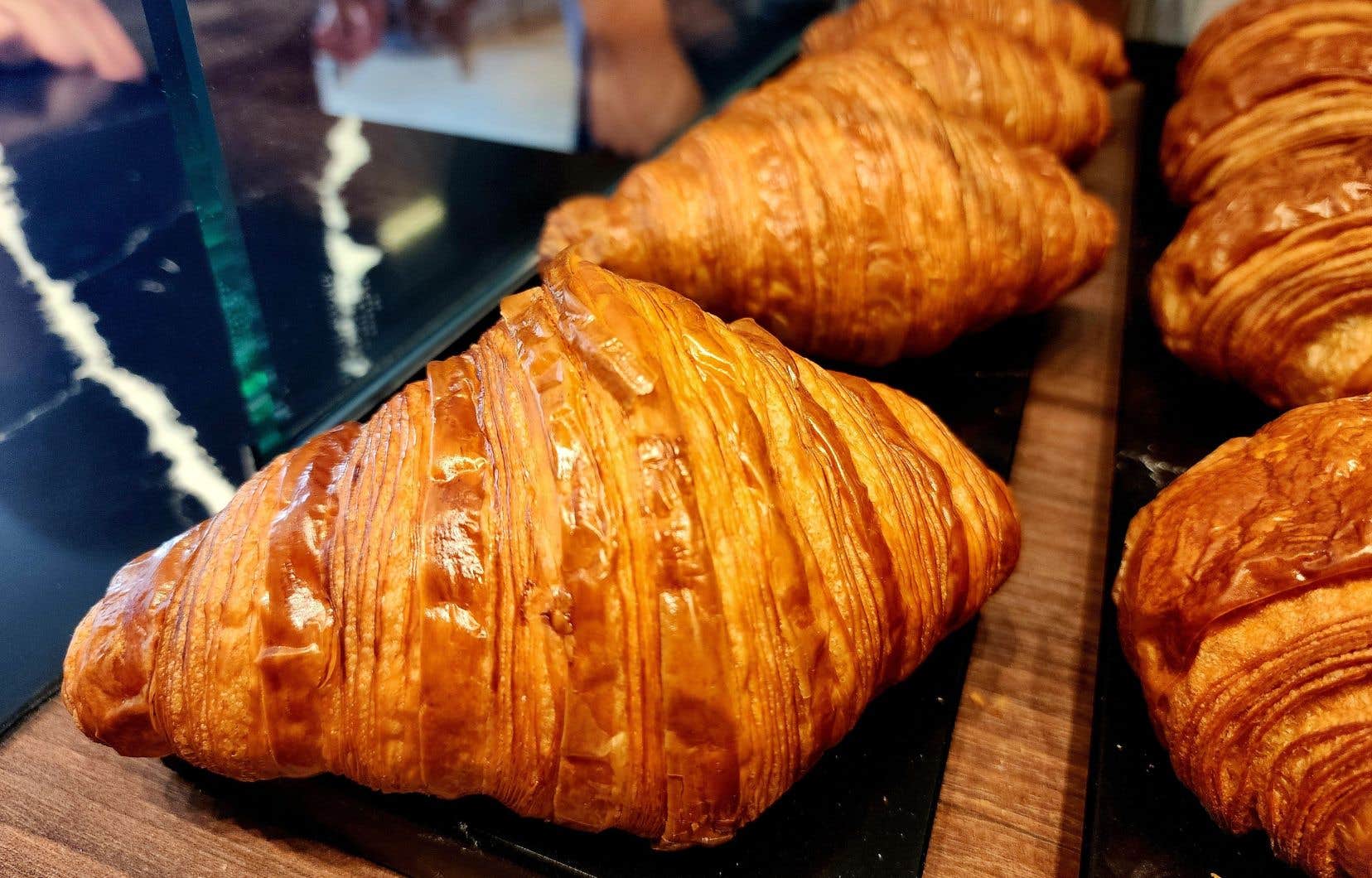This text is part of the special Pleasures notebook
Crispy, melting, airy, buttery as desired… A good croissant to taste is a little moment of unparalleled gourmet happiness. This pastry was created in Vienna in 1683. But the recipe based on puff pastry that we now know was developed by a French chef in 1915 and represents one of the most prized baking skills. But also one of the most debated! Indeed, should a croissant worthy of the name be golden or amber, more flaky or buttery? To try to resolve this existential question, we went to find the title holders of the best croissant in Montreal and proud participants of the Croissant Festival on June 15.
On Avenue du Mont-Royal, the Ô Petit Paris bakery is unmissable. For what ? Because you always come across a long line of customers, sometimes even in the street. Founded by two brothers of French origin, Maxime Mottier and Bastien Huguet, this den offers 16 types of bread, pastries, brioches and a range of pastries, each more attractive than the last. Among them, famous croissants, which won the prize for best croissant in Montreal last year.
“Our croissant is popular,” confirm the two co-owners. We produce more than 400 per day. » And that’s nothing compared to the upcoming Crescent Festival, since the establishment will sell 2,500 to 3,000 of them that day! It is therefore with a certain excitement that we follow the bakers into the back room, where these little wonders are created.
The ingredients of a good croissant
To begin with, a croissant is made up of a few ingredients: flour, water, sugar, yeast and lots and lots of butter — a third of the proportion of flour, to be precise. “For around fifty croissants, we use 3 kg of flour and 1 kg of butter. But personally, I find that there is never enough! » says Bastien Huguet. The baker also adds a little fermented croissant dough to his recipe, as well as an egg-based glaze during baking to give an additional color and taste to his creations.
Be careful, however. Depending on the ingredients selected, the result can vary enormously. As the baker explains, “you need flour that promotes growth [le commerce en a adopté une fabriquée par les Moulins de Soulanges, au Québec]. As for the butter [pas de margarine], it can come from several origins: Canada, New Zealand, Normandy, etc. Ours arrives from Belgium. It is a turning butter which has the advantage of being in the form of a large flat plate, which allows it to be easily placed on the dough before folding it.
One know-how, several schools of thought
Which brings us to the second fundamental part of a good croissant: turning, this culinary technique consisting of making superimposed folds of thin dough to make a puff pastry. This process is so special that certain bakers and pastry chefs, known as touriers, specialize in this sphere.
When we make croissants, the turning takes place after a first mixing, the kneading, the division into dough pieces and the rolling, at the moment when the dough is flattened so that we integrate the butter. And it is at this stage that the number of layers and, at the same time, a good part of the texture of the croissant are determined. “The more sheets we see, the more tricks have been carried out,” says Bastien Huguet. Each baker therefore has the freedom to choose what they want: beautiful, flaky croissants with multiple visible streaks, but which will be drier and crumble more quickly, or less flaky croissants, a little less pretty, but more fondant, and with a more pronounced buttery taste. »
Finding the right balance in turning, but also the ideal browning and baking, represents challenges for every baker, just as it constitutes his signature. Croissants made in a traditional oven will be less developed and crispy. But they will also be more tender than those made in a rotary heat device.
“Then it all depends on people’s preferences. We won the prize for the best croissant in Montreal, but that doesn’t mean that ours are the best for everyone, explains Maxime Mottier. This is why the Croissant Festival is so great! It allows you to try lots of different types and enjoy them. »
The 2024 edition of the Crescent Festival
This content was produced by the Special Publications team at Duty, relating to marketing. The writing of the Duty did not take part.
